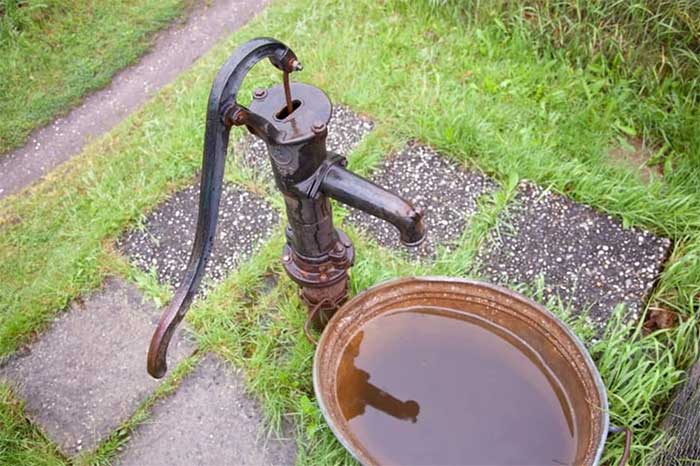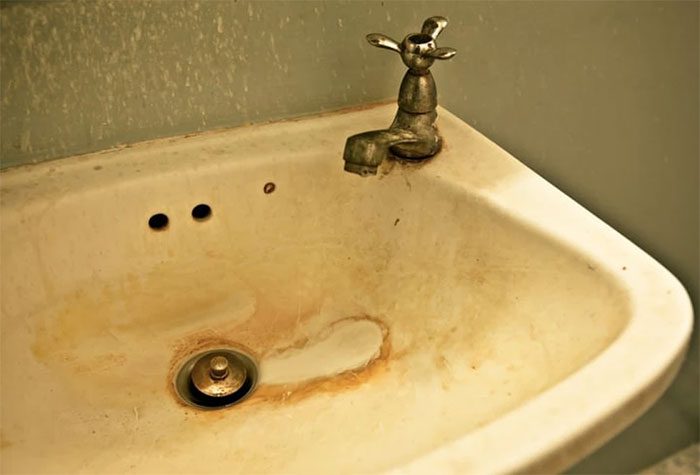Many people are concerned about the color of water when using drilled wells. Why does well water appear yellow?
With the expanding coverage of the piped water supply system, the number of drilled wells in Vietnam today is only a small fraction compared to a few decades ago. However, in many localities, alongside the piped water supply, some families still maintain drilled wells for various purposes, including as a backup in case of water outages.
Drilled wells are typically located outside the home and are drilled deep underground to access groundwater.
While well water is cool and refreshing, its color can raise concerns. In addition to wells that yield clear water, many users are puzzled as to why their well water appears yellow and has a very unpleasant fishy odor.

Yellow well water indicates heavy metal pollution.
Reasons for Yellow Well Water
In the past, groundwater was still clean, allowing us to use water from dug and drilled wells directly without any treatment. However, today, the development of various industries, agricultural production that uses numerous chemicals, and daily human activities have led to severe pollution of groundwater.
The phenomenon of yellow well water is caused by heavy metal pollution in the groundwater, specifically iron pollution.
Iron ions in well water typically exist in the form of Fe2+ or non-precipitated iron II oxide. They remain suspended in the water, and when the water comes into contact with air, the iron ions oxidize and precipitate, turning the water yellow and giving it an unpleasant fishy odor.
Yellow well water with a fishy smell cannot be used directly for daily activities as it not only affects human health but also damages household items and equipment.
Identifying Iron-Polluted Well Water
When first pumped, iron-polluted well water may appear clear but has a strong fishy odor; after exposure to air, it turns yellow or reddish-brown and forms a film on the surface.
Iron-polluted water has a high concentration of iron 2 (Fe2+), giving it a metallic taste and a sour flavor.
Besides relying on color and taste, you can apply the following testing methods to determine if your well water is contaminated with iron.
- Banana Sap Test: Cut across the stem or leaf of a banana plant and place well water on the cut surface. If the cut turns color, it indicates iron contamination. To assess the severity of iron contamination, you can pour banana sap into a bowl of water; the darker the red color, the heavier the iron pollution.
- Tea Test: Prepare a pot of strong tea and pour it into a bowl of water; if the water turns deep purple, it indicates a severe level of iron contamination.
What Are the Dangers of Iron-Polluted Well Water?
Using untreated iron-polluted well water for bathing, drinking, and washing can have negative effects, such as:
- Causing skin irritation and allergies.
- Leading to intestinal infections, acute diarrhea, and long-term adverse effects on the digestive system.
- Resulting in kidney stones and urinary tract stones due to the gradual accumulation of toxins in the body.

Iron-polluted well water affects human health and damages household appliances. (Image: Action Plumbing).
- Causing damage to household appliances, such as rusting, clogging sink and shower pipes, and kettles… Iron contamination in well water leads to rusting pipes, creating leaks that facilitate bacterial entry into the water source.
- Making clothes often yellowed, requiring more soap but difficult to wash clean.
The Dangers of Polluted Water Sources


















































